Length

Gastronomy Heaven
Bastia to Olbia. Discover the wilds of Corsica and the opulence of Sardinia. Blend French and Italian cuisine for a taste of 2 worlds.

Bastia to Olbia. Discover the wilds of Corsica and the opulence of Sardinia. Blend French and Italian cuisine for a taste of 2 worlds.
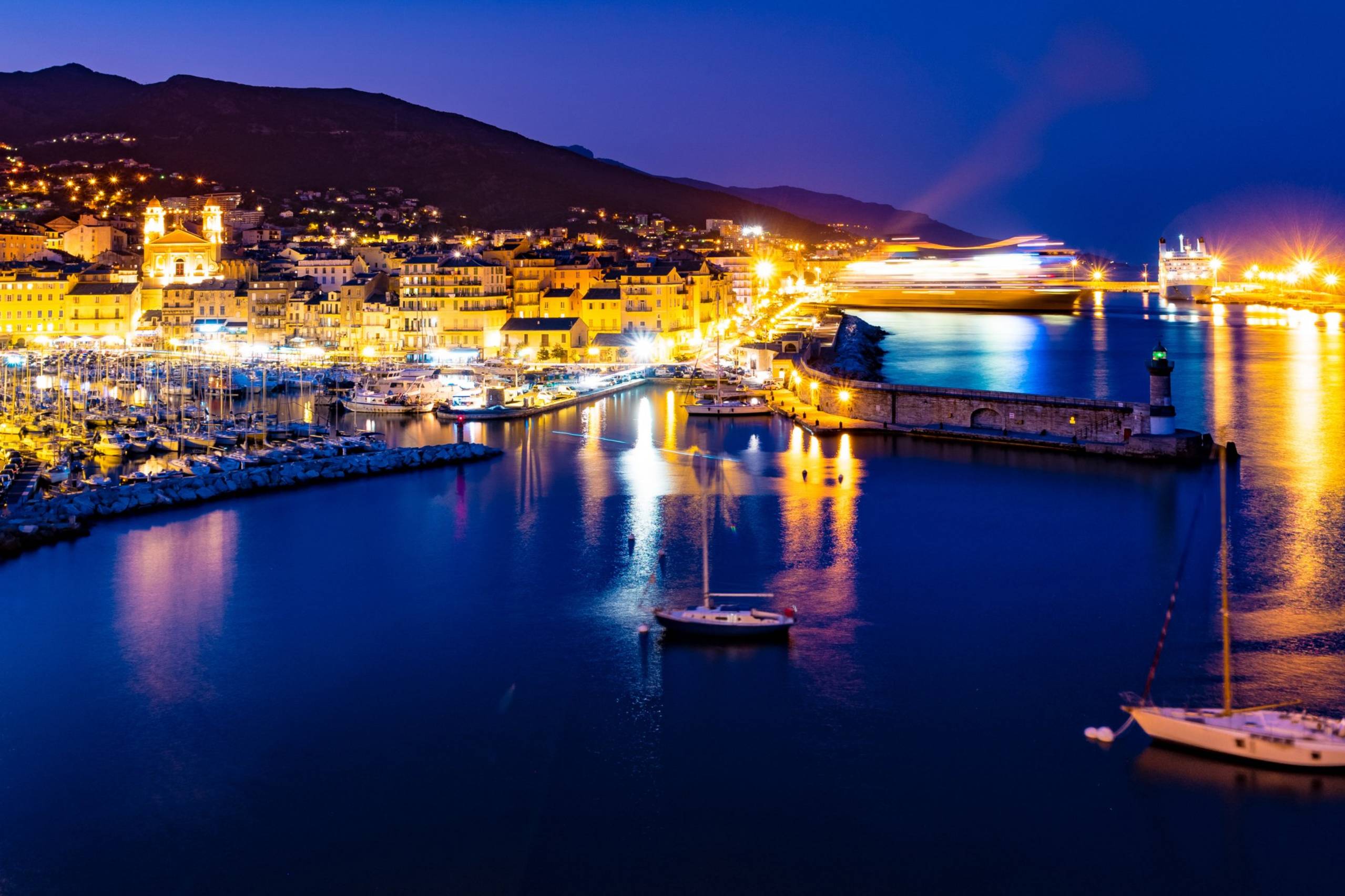
Day 01
Bastia’s vieux port is the place to be in summer. It’s lit up at night like a petite Naples or a mini Marseille. The majestic old harbour forms an amphitheatre around 50 restaurants and bars. These establishments live cheek by jowl with colourful fishing boats, from which they derive the daily catch.
But locals claim the ‘true’ Corsica starts just north of Bastia. Cap Corse is soaring ridge of mountain passes and eagle’s nests. The beaches here are naturally deserted. All visitors will spot at Barcaggio and Tamarone is empty sand, driftwood and the Tuscan coast shimmering in the distance. The local waters remain feral, unexplored and teaming with life.

Day 02
St Florent is Corsica’s answer to St Tropez. This former fishing village boasts the same Riviera balance of boules and bling. Sandal and swimwear shops peep out from every stone building. Pastis and passeggiata are the resort’s principal pastimes. A curve of heavenly white beaches sweep west from the marina - St Florent’s finest is surely Plage Lodo. This vast Thai-style bay couples tickly sand with a translucent sea. For a mental picture think of a deserted Plage Pampelonne. The peninsula’s backdrop is one long vineyard. The undulating green is threaded by the Route des Vins.

Day 03
The towering citadel of Calvi once commanded Genoese trade routes from Nice to Napoli. Its honey-hued old town is now a ribbon of beaches that sweep eastwards along the Corsican coast. The beaches south and east of Calvi, like Tuara and Cravani, are populated only by driftwood, seashells and the occasional goat. Others, including Saleccia and Ostriconi, are so isolated you need a mule, or a superyacht, to reach them.

Day 04
The scandola nature reserve takes up the promontory dividing the Balagne from the Golfe de Porto, its name derived from the wooden tiles (scandules) that cover many of the island’s mountain houses, but the area’s roof-like rock formations are only part of its amazing geological repertoire: its stacked slabs, towering pinnacles and gnarled claw-like outcrops were formed by Monte Cinto’s volcanic eruptions 250 million years ago, and subsequent erosion has fashioned shadowy caves, grottoes and gashes in the rock. Scandola’s colours are as remarkable as the shapes, the hues varying from the charcoal grey of granite to the incandescent rusty purple of porphyry.
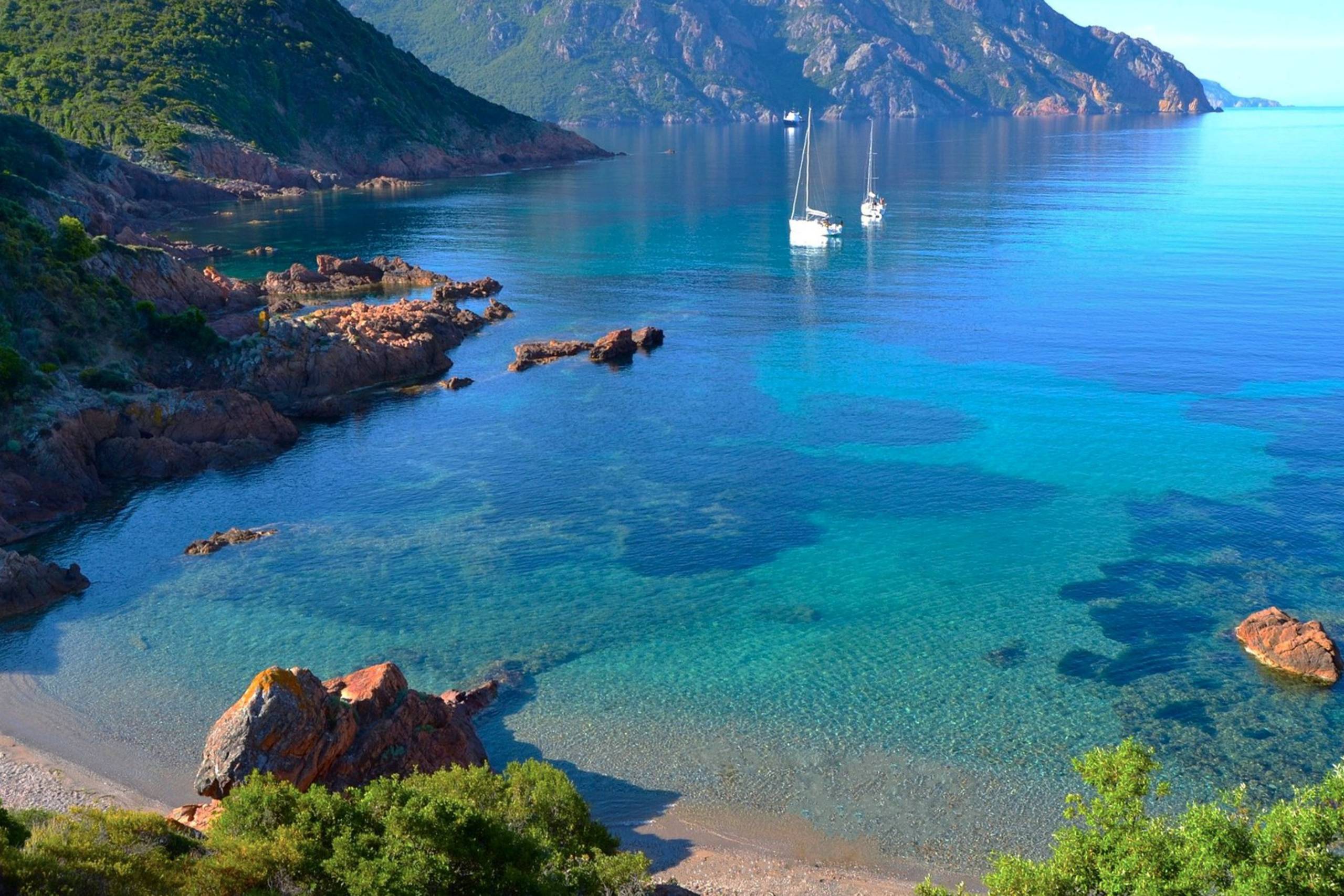
Day 05
The Gulf of Girolata is quite literally not for everyone. In 1975 it was declared a marine reserve: a Shangri-la only accessible by sea. Restaurants in the fishing hamlet of Girolata brim with local lobster and red mullet. Deserted beaches abound in the wider gulf. Porto Plage is still protected by a Genoese Tower. Just north, a maze of creeks, islets and red rock cliffs make up the Parc Naturel Régional de la Corse. Visitors can swim between porphyry islands, basalt columns and concealed caves. Those hoping to catch a glimpse of resident tuna, swordfish and grouper will compete with peregrine falcons, sea eagles and osprey.
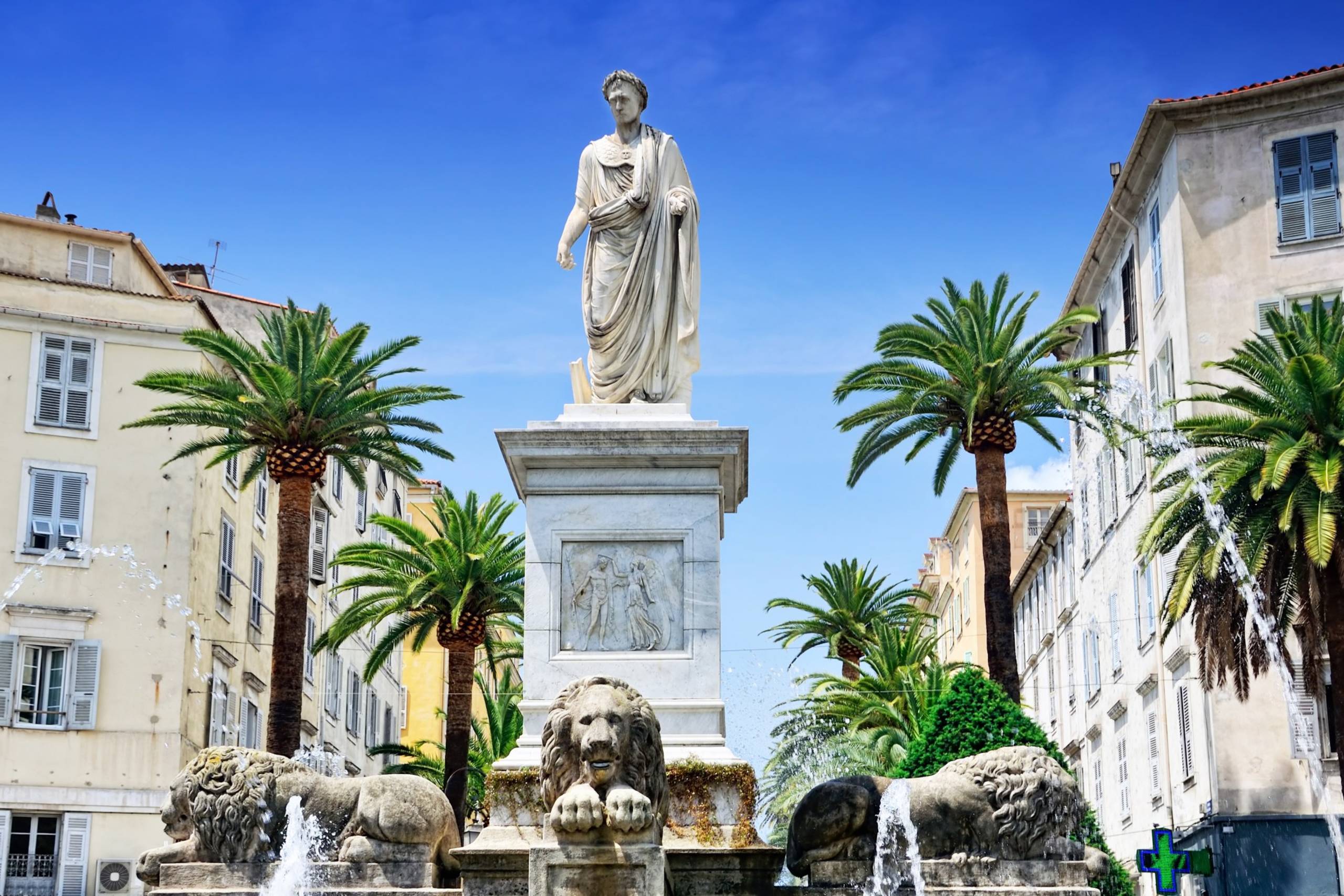
Day 06
Even if it wasn’t the birthplace of Napoleon, the capital city of Ajaccio would be worth a visit both for its own beauty and that of the surrounding gulf. Ajaccio is a working town of bustling streets, markets, palm trees, traffic, people, fountains, monuments and rickety buildings. It has a charm and a buzz all of its own; step ashore for dinner or a drink, sit back and watch the world go by. Visit the sumptuous cathedral from 1582, Napoleon’s house and fesch museums, featuring primitive Italian paintings.
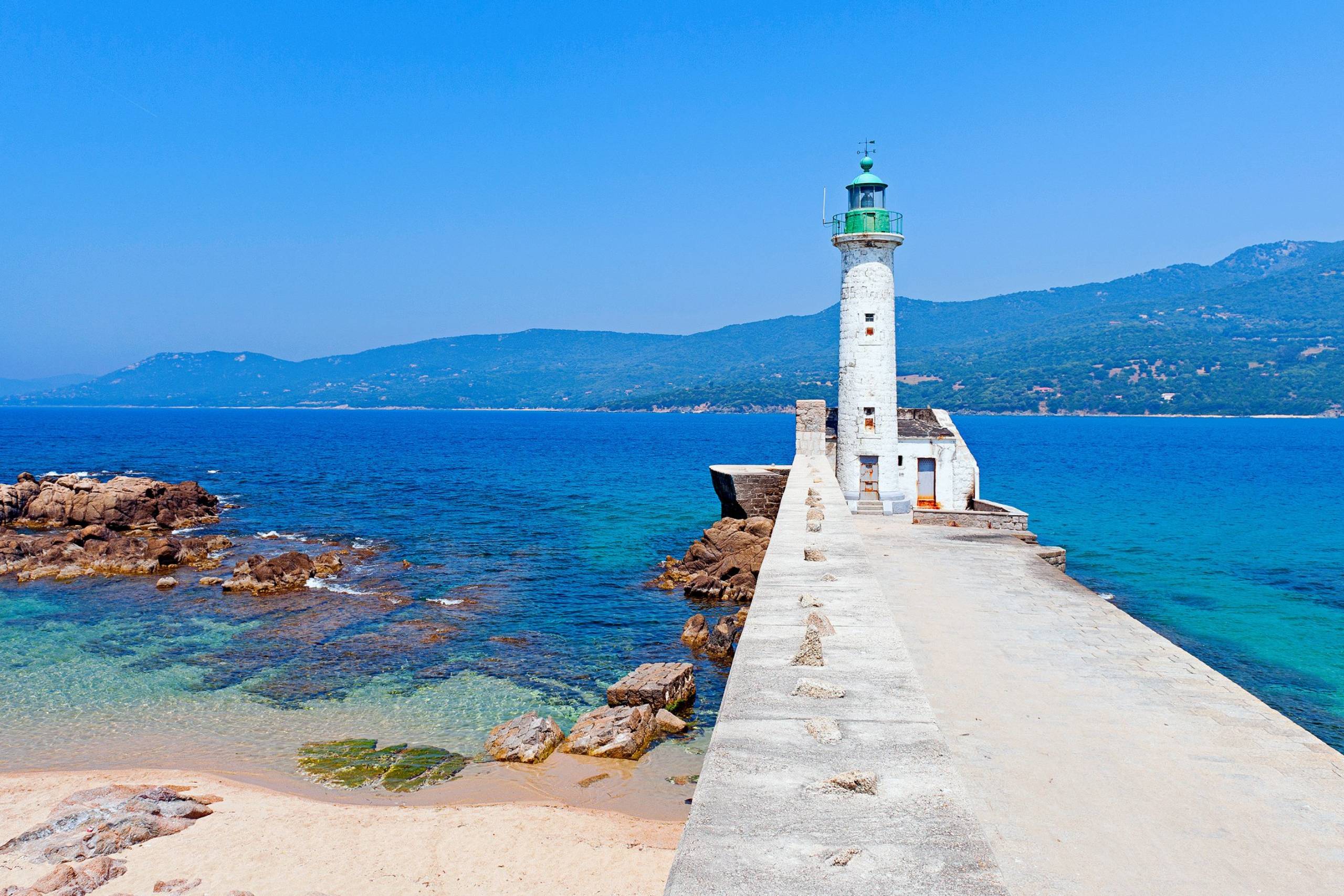
Day 07
If you like lobster, langoustine and chilled Laurent-Perrier, you’ll love Propriano. In such a manner does Corsica’s most luxurious marina effortlessly cater to its clientele. The passerelles at Propriano also serve as a bridge into the ‘real’ Corsica. The bucolically sited Bronze Age sculptures of Filitosa and the timeless town of Sartène are a short drive away.
Two of Corsica’s finest beaches sit within a 20-minute sail of Propriano. Both are frequented more by stray donkeys than superyachts. Cupabia Plage is a triple-bayed gem with one beach bar serving three miles of golden sand. Plage de Verghia is a sheltered paradise for paddleboards and kayaks.

Day 08
Bonifacio offers yachtsmen a breathtaking welcome. Security-conscious locals constructed a town that clings to a clifftop redoubt. But the more this Mediterranean port was attacked, the more beautiful it became. Successive waves of Vandal, Lombard and Tuscan raiders raised the citadel walls even higher, until it resembled a Disney-like castle on the sea. Visitors travelling under their own steam can witness more playful delights. A quicksilver necklace of bays and islands sweeps east from Bonifacio marina. Yours could be the day’s first footsteps on the white sands of Balistra Plage. Or try the clifftop golf course at Sperone, which lies balanced on the southernmost tip of France.

Day 09
The natural harbour of Porto Vecchio has been used since Roman times. The handsome town is now part modern, part medieval. A colourful scatter of markets, churches and restaurants tumble down to the port. There’s no settlement south of here until you hit Sardinia. The surrounding sea is crystal clear. Highlights for divers are the Cerbicales and Lavezzi archipelagos, which lie protected in a marine park. Even novice snorkellers can float over banks of barracuda and grouper - A kaleidoscope of undersea life.
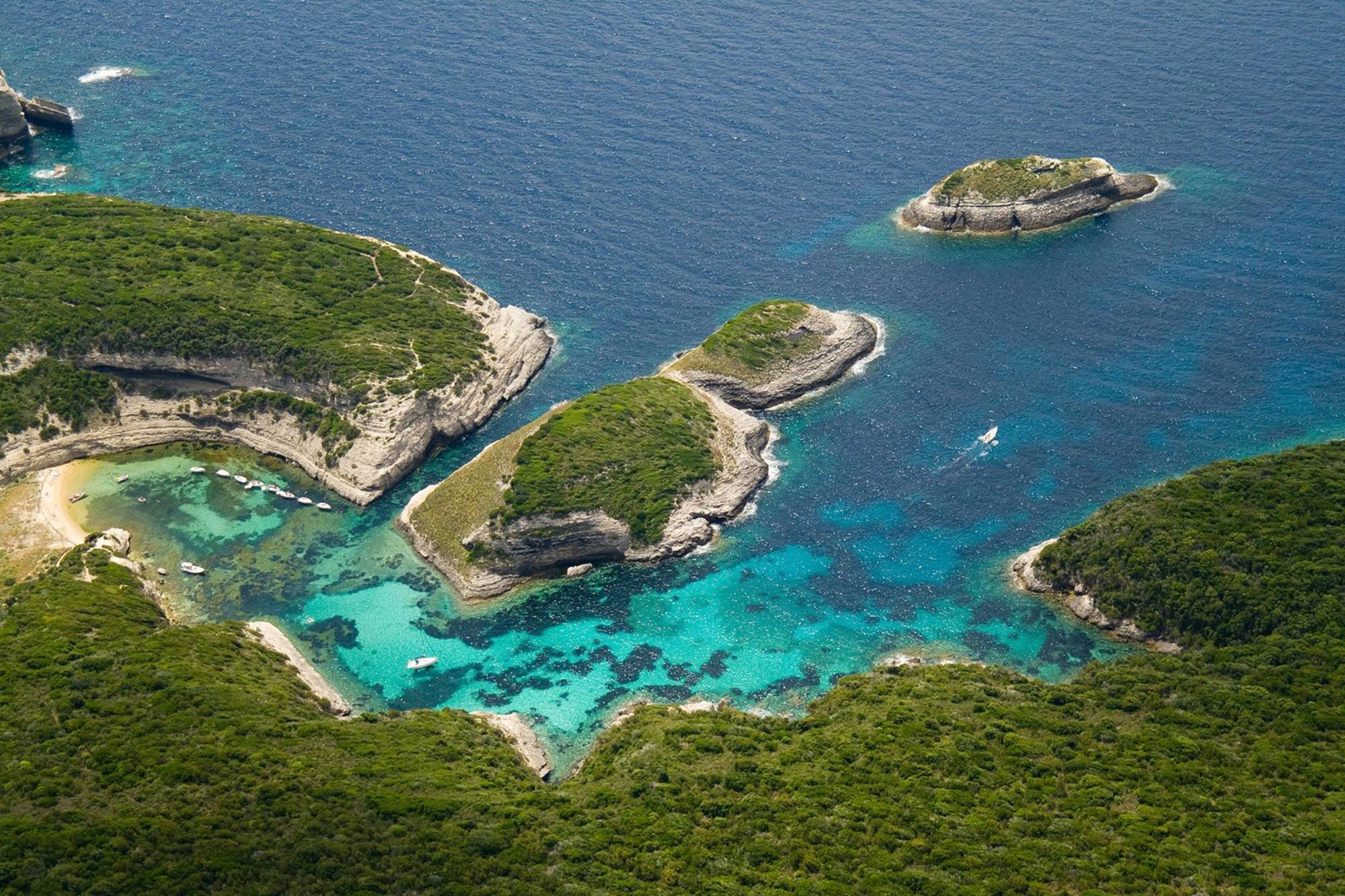
Day 10
Imagine a Thai-style Eden lost in the Mediterranean Sea. Welcome to Cavallo, an island paradise the A-list prefers to keep to themselves. Roman prisoners were once interned here, safe in the knowledge that only a private boat may venture to and from. Left abandoned until the 19th century, Cavallo’s tiny yacht harbour was only constructed a decade ago.
Paradise is situated midway between Corsica and Sardinia and is ringed by sandy shores. Island transport is by Mustique-style ‘mule’ electric cars, so tranquillity is assured.
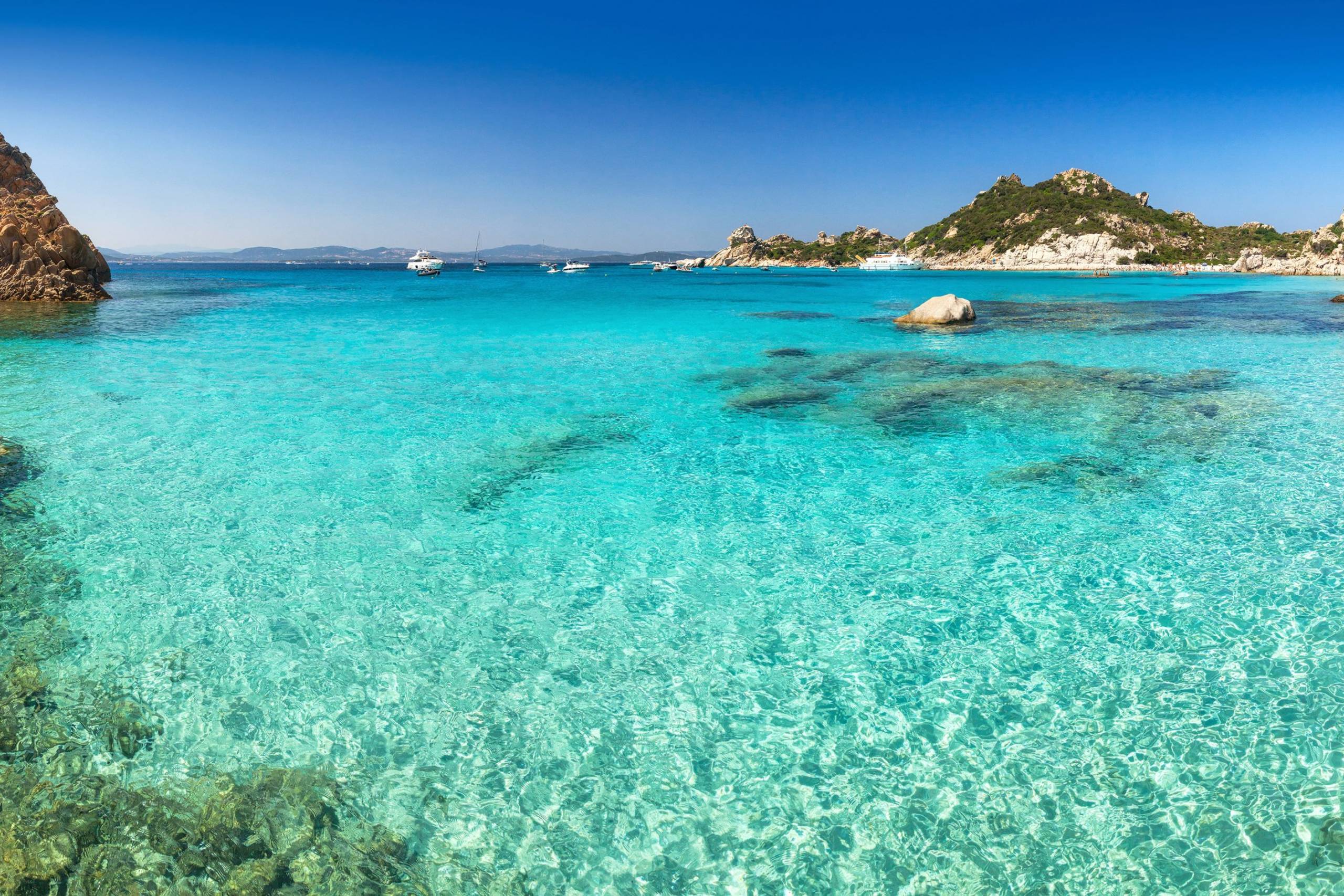
Day 11
Imagine a Thai-style archipelago in Bahama-blue seas, blessed with Italian cuisine. Welcome to the Maddalena Islands, nature’s gift to yachtsmen. This seven-island chain basks in its own protected marine park, midway between Corsica and Sardinia. Its 50 beaches are ice-white, silky-soft and reassuringly private. Half are accessible only by boat.
The islands of Razzoli, Budelli and Spargi share 50km of pristine coastline, yet are inhabited only by shearwaters, finches and gulls. Swim ashore through turquoise shallows to the five beaches of Santa Maria Island. Yours will be the only footsteps there. On beachy Santo Stefano Island a world of exploration awaits. It was barred to boats until 2008 as a NATO marine base.
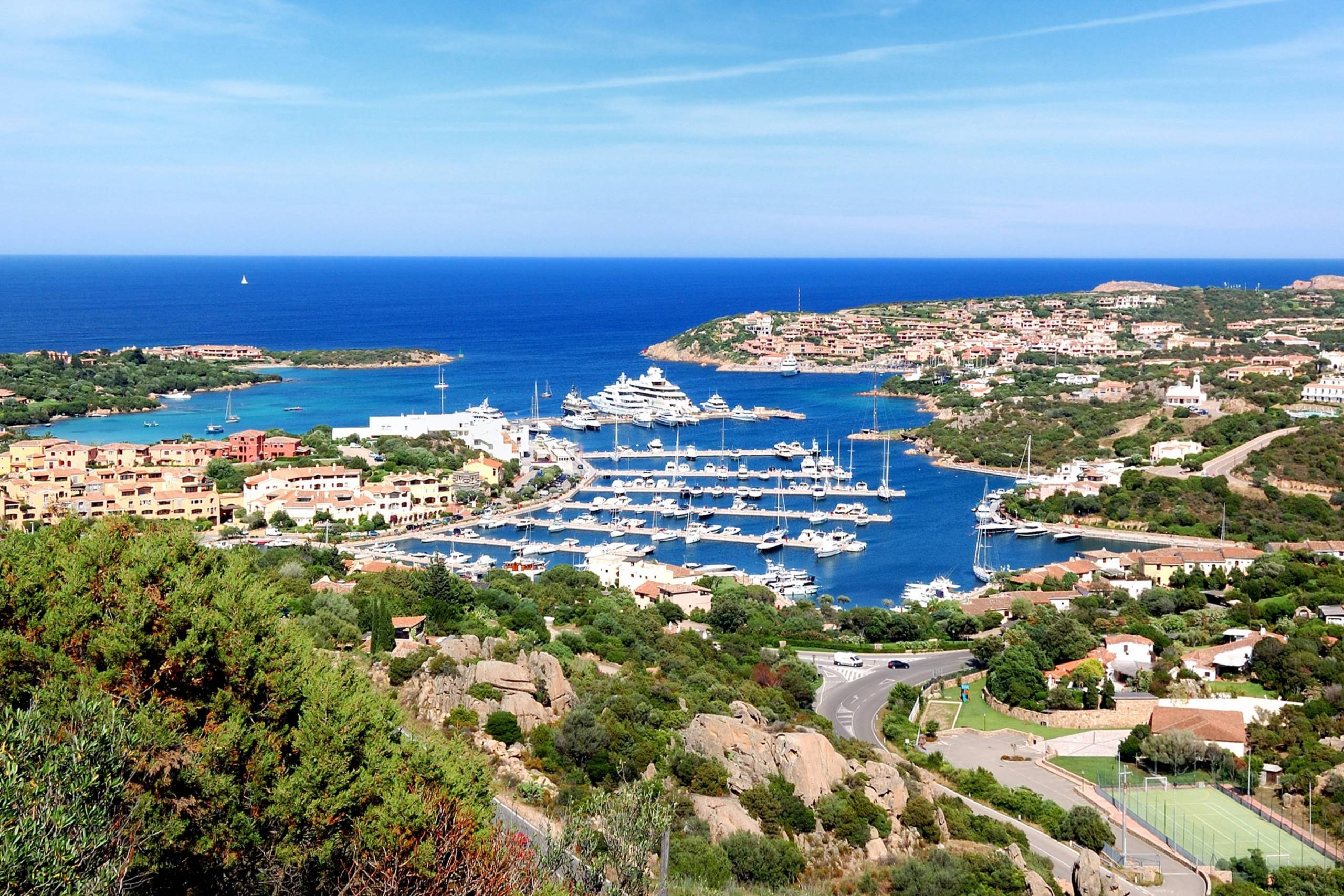
Porto Cervo appears on the Costa Smeralda coastline like a decadent mirage. This elegant harbour distils the ultimate in luxury lifestyle into one petite package. The Passeggiata promenade winds through the resort, over wooden bridges and turquoise creeks, past restaurant terraces and blissful boutiques.
The surrounding Costa Smeralda was the luxurious brainchild of the Aga Khan. His Highness was smitten by the clarity of the local water, which warm currents melt into an emerald hue. The dozen beaches around Porto Cervo are a seventh heaven of ice-white coves and translucent seas, with zero development in sight. After a day’s exertions at Phi Beach it’s time to regroup. Sundowners are at their most memorable on the terrace of the Costa Smeralda Yacht Club.
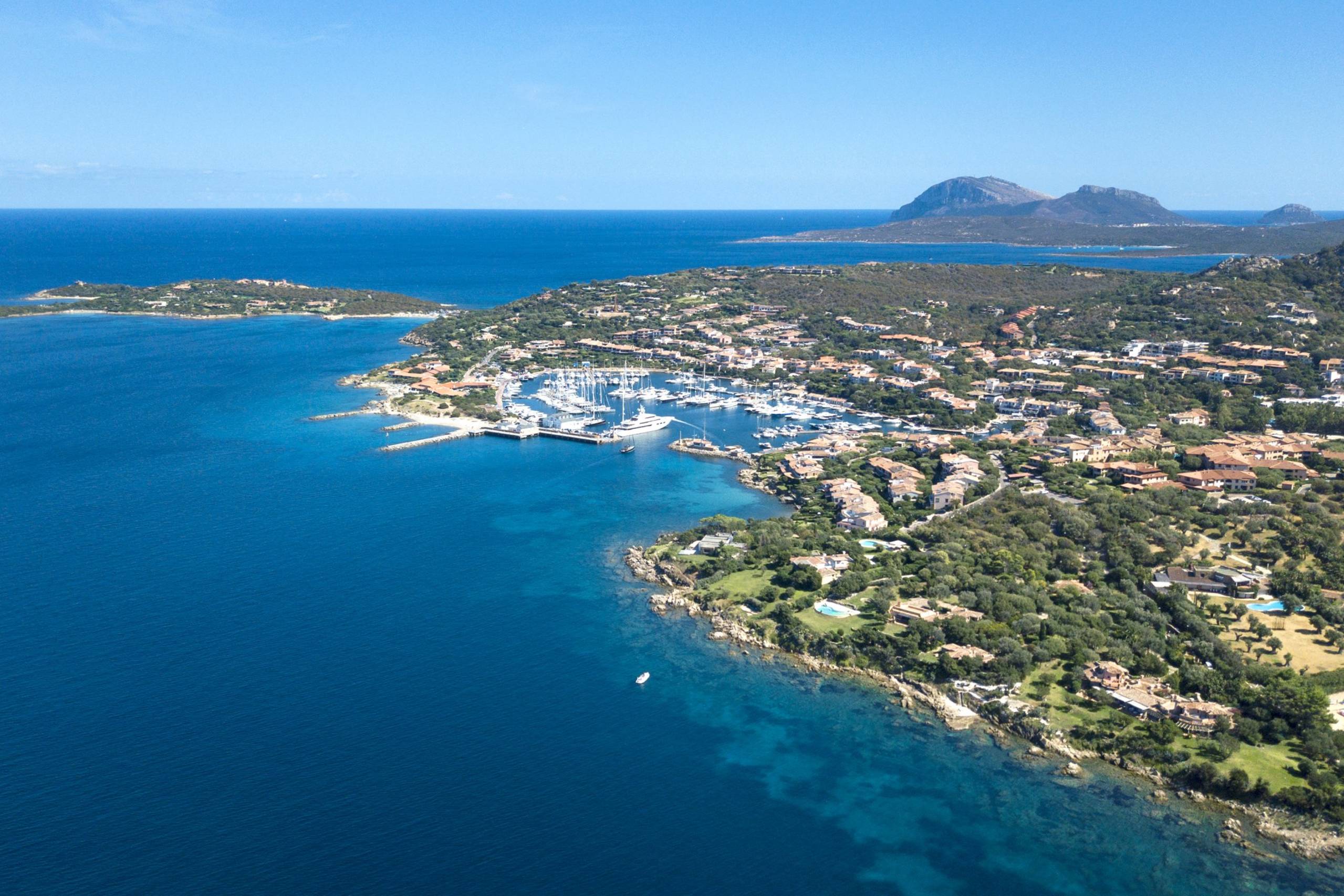
Day 12
In 1964 two Italian architects engineered a little Venice on the Mediterranean Sea. A visual spectacular of pretty piazzas and wooden bridges that loop around a dozen beaches and a lapping bay. Life radiates from the pavement cafés of La Piazzetta along a series of flower-filled lanes. An impossibly elegant marina where discreet sun-seekers come to play. Porto Rotondo is blessed with some of the Mediterranean’s finest beaches. Cala Banana is a yellow curve of soft sand, juxtaposed against a cobalt blue. Spiaggia di Mannena – known locally as Le Piscine – is a swimming pool lagoon of transparent sea.
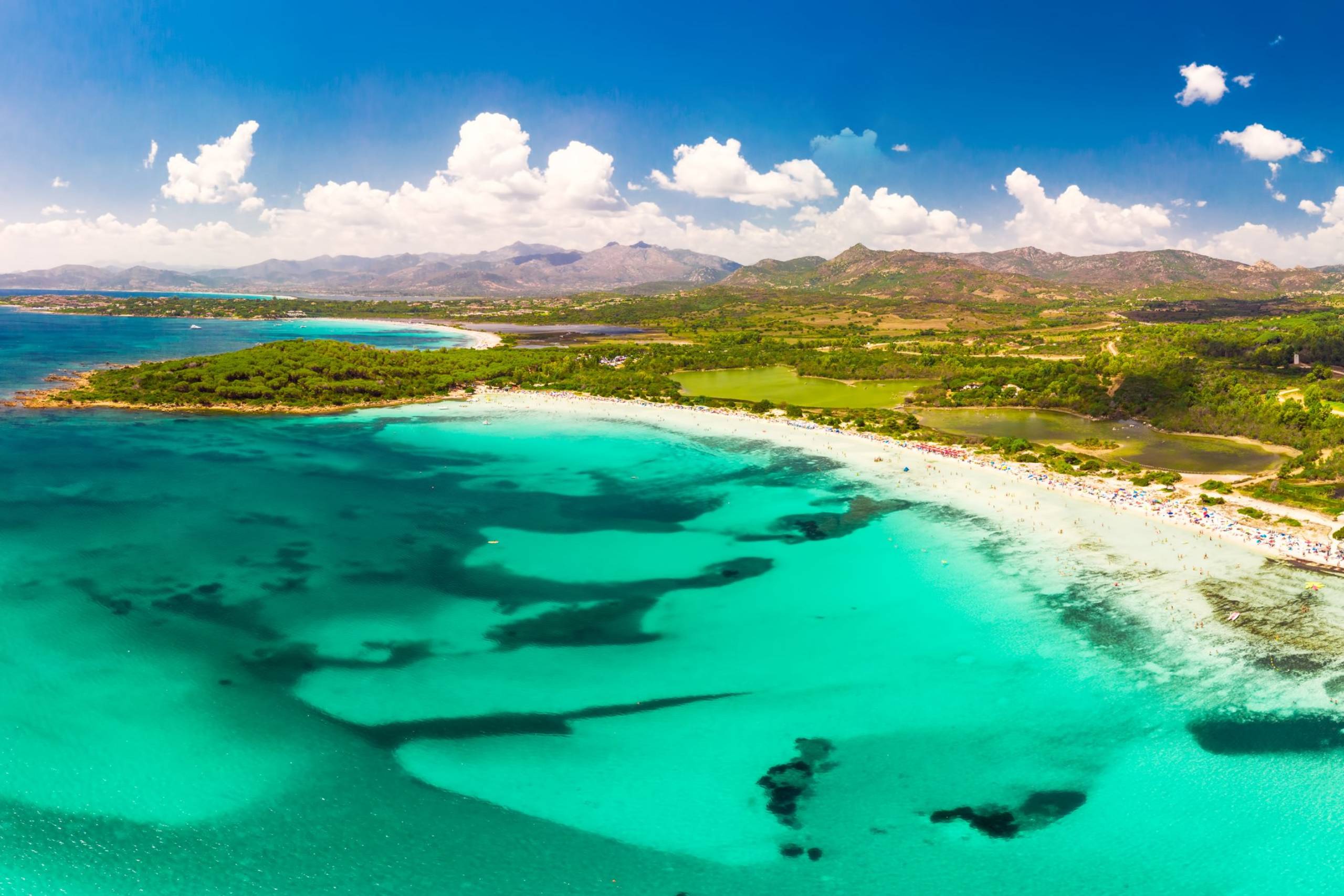
Day 13
Olbia is Sardinia’s sunny gateway. An ancient Greek colony, its name translates as ‘happy town’. These bustling city streets personify their moniker. Holiday heaven is a stroll along Corso Umberto, a boulevard filled with cafés, enotecas and one-off boutiques.
Olbia sits just south of Sardinia’s legendary Costa Smeralda. This prime position makes it a perfect launch for exploring Golfo Aranci’s beachy shores. For sunseekers searching for their own deserted stretch of sand, the remote island of Figarolo crowns the bay’s northern tip. Oenophiles can sip and savour the regional tipple, Vermentino di Gallura, a crisp, floral white wine. A dozen vineyards pan north from Olbia to Porto Cervo on the Strada del Gusto wine trail.
Bastia’s vieux port is the place to be in summer. It’s lit up at night like a petite Naples or a mini Marseille. The majestic old harbour forms an amphitheatre around 50 restaurants and bars. These establishments live cheek by jowl with colourful fishing boats, from which they derive the daily catch.
But locals claim the ‘true’ Corsica starts just north of Bastia. Cap Corse is soaring ridge of mountain passes and eagle’s nests. The beaches here are naturally deserted. All visitors will spot at Barcaggio and Tamarone is empty sand, driftwood and the Tuscan coast shimmering in the distance. The local waters remain feral, unexplored and teaming with life.

St Florent is Corsica’s answer to St Tropez. This former fishing village boasts the same Riviera balance of boules and bling. Sandal and swimwear shops peep out from every stone building. Pastis and passeggiata are the resort’s principal pastimes. A curve of heavenly white beaches sweep west from the marina - St Florent’s finest is surely Plage Lodo. This vast Thai-style bay couples tickly sand with a translucent sea. For a mental picture think of a deserted Plage Pampelonne. The peninsula’s backdrop is one long vineyard. The undulating green is threaded by the Route des Vins.

The towering citadel of Calvi once commanded Genoese trade routes from Nice to Napoli. Its honey-hued old town is now a ribbon of beaches that sweep eastwards along the Corsican coast. The beaches south and east of Calvi, like Tuara and Cravani, are populated only by driftwood, seashells and the occasional goat. Others, including Saleccia and Ostriconi, are so isolated you need a mule, or a superyacht, to reach them.

The scandola nature reserve takes up the promontory dividing the Balagne from the Golfe de Porto, its name derived from the wooden tiles (scandules) that cover many of the island’s mountain houses, but the area’s roof-like rock formations are only part of its amazing geological repertoire: its stacked slabs, towering pinnacles and gnarled claw-like outcrops were formed by Monte Cinto’s volcanic eruptions 250 million years ago, and subsequent erosion has fashioned shadowy caves, grottoes and gashes in the rock. Scandola’s colours are as remarkable as the shapes, the hues varying from the charcoal grey of granite to the incandescent rusty purple of porphyry.

The Gulf of Girolata is quite literally not for everyone. In 1975 it was declared a marine reserve: a Shangri-la only accessible by sea. Restaurants in the fishing hamlet of Girolata brim with local lobster and red mullet. Deserted beaches abound in the wider gulf. Porto Plage is still protected by a Genoese Tower. Just north, a maze of creeks, islets and red rock cliffs make up the Parc Naturel Régional de la Corse. Visitors can swim between porphyry islands, basalt columns and concealed caves. Those hoping to catch a glimpse of resident tuna, swordfish and grouper will compete with peregrine falcons, sea eagles and osprey.

Even if it wasn’t the birthplace of Napoleon, the capital city of Ajaccio would be worth a visit both for its own beauty and that of the surrounding gulf. Ajaccio is a working town of bustling streets, markets, palm trees, traffic, people, fountains, monuments and rickety buildings. It has a charm and a buzz all of its own; step ashore for dinner or a drink, sit back and watch the world go by. Visit the sumptuous cathedral from 1582, Napoleon’s house and fesch museums, featuring primitive Italian paintings.

If you like lobster, langoustine and chilled Laurent-Perrier, you’ll love Propriano. In such a manner does Corsica’s most luxurious marina effortlessly cater to its clientele. The passerelles at Propriano also serve as a bridge into the ‘real’ Corsica. The bucolically sited Bronze Age sculptures of Filitosa and the timeless town of Sartène are a short drive away.
Two of Corsica’s finest beaches sit within a 20-minute sail of Propriano. Both are frequented more by stray donkeys than superyachts. Cupabia Plage is a triple-bayed gem with one beach bar serving three miles of golden sand. Plage de Verghia is a sheltered paradise for paddleboards and kayaks.

Bonifacio offers yachtsmen a breathtaking welcome. Security-conscious locals constructed a town that clings to a clifftop redoubt. But the more this Mediterranean port was attacked, the more beautiful it became. Successive waves of Vandal, Lombard and Tuscan raiders raised the citadel walls even higher, until it resembled a Disney-like castle on the sea. Visitors travelling under their own steam can witness more playful delights. A quicksilver necklace of bays and islands sweeps east from Bonifacio marina. Yours could be the day’s first footsteps on the white sands of Balistra Plage. Or try the clifftop golf course at Sperone, which lies balanced on the southernmost tip of France.

The natural harbour of Porto Vecchio has been used since Roman times. The handsome town is now part modern, part medieval. A colourful scatter of markets, churches and restaurants tumble down to the port. There’s no settlement south of here until you hit Sardinia. The surrounding sea is crystal clear. Highlights for divers are the Cerbicales and Lavezzi archipelagos, which lie protected in a marine park. Even novice snorkellers can float over banks of barracuda and grouper - A kaleidoscope of undersea life.

Imagine a Thai-style Eden lost in the Mediterranean Sea. Welcome to Cavallo, an island paradise the A-list prefers to keep to themselves. Roman prisoners were once interned here, safe in the knowledge that only a private boat may venture to and from. Left abandoned until the 19th century, Cavallo’s tiny yacht harbour was only constructed a decade ago.
Paradise is situated midway between Corsica and Sardinia and is ringed by sandy shores. Island transport is by Mustique-style ‘mule’ electric cars, so tranquillity is assured.

Imagine a Thai-style archipelago in Bahama-blue seas, blessed with Italian cuisine. Welcome to the Maddalena Islands, nature’s gift to yachtsmen. This seven-island chain basks in its own protected marine park, midway between Corsica and Sardinia. Its 50 beaches are ice-white, silky-soft and reassuringly private. Half are accessible only by boat.
The islands of Razzoli, Budelli and Spargi share 50km of pristine coastline, yet are inhabited only by shearwaters, finches and gulls. Swim ashore through turquoise shallows to the five beaches of Santa Maria Island. Yours will be the only footsteps there. On beachy Santo Stefano Island a world of exploration awaits. It was barred to boats until 2008 as a NATO marine base.

Porto Cervo appears on the Costa Smeralda coastline like a decadent mirage. This elegant harbour distils the ultimate in luxury lifestyle into one petite package. The Passeggiata promenade winds through the resort, over wooden bridges and turquoise creeks, past restaurant terraces and blissful boutiques.
The surrounding Costa Smeralda was the luxurious brainchild of the Aga Khan. His Highness was smitten by the clarity of the local water, which warm currents melt into an emerald hue. The dozen beaches around Porto Cervo are a seventh heaven of ice-white coves and translucent seas, with zero development in sight. After a day’s exertions at Phi Beach it’s time to regroup. Sundowners are at their most memorable on the terrace of the Costa Smeralda Yacht Club.

In 1964 two Italian architects engineered a little Venice on the Mediterranean Sea. A visual spectacular of pretty piazzas and wooden bridges that loop around a dozen beaches and a lapping bay. Life radiates from the pavement cafés of La Piazzetta along a series of flower-filled lanes. An impossibly elegant marina where discreet sun-seekers come to play. Porto Rotondo is blessed with some of the Mediterranean’s finest beaches. Cala Banana is a yellow curve of soft sand, juxtaposed against a cobalt blue. Spiaggia di Mannena – known locally as Le Piscine – is a swimming pool lagoon of transparent sea.

Olbia is Sardinia’s sunny gateway. An ancient Greek colony, its name translates as ‘happy town’. These bustling city streets personify their moniker. Holiday heaven is a stroll along Corso Umberto, a boulevard filled with cafés, enotecas and one-off boutiques.
Olbia sits just south of Sardinia’s legendary Costa Smeralda. This prime position makes it a perfect launch for exploring Golfo Aranci’s beachy shores. For sunseekers searching for their own deserted stretch of sand, the remote island of Figarolo crowns the bay’s northern tip. Oenophiles can sip and savour the regional tipple, Vermentino di Gallura, a crisp, floral white wine. A dozen vineyards pan north from Olbia to Porto Cervo on the Strada del Gusto wine trail.

let's chat.
Get in touch with one of our teams around the world
Where you'll find us
Monaco — MC
+377 93 50 12 12London — UK
+44 20 7584 1801Fort Lauderdale — US
+1 954 278 3970Auckland — NZ
+64 9 281 5133Contact us
[email protected]Length
Price per week
Dates
Size
Length
Price
Price per week
When
Dates
0 Results
SearchLength
Price per week
Build range
Size
Length
Price
Price per week
Year
Build range
0 Results
Search